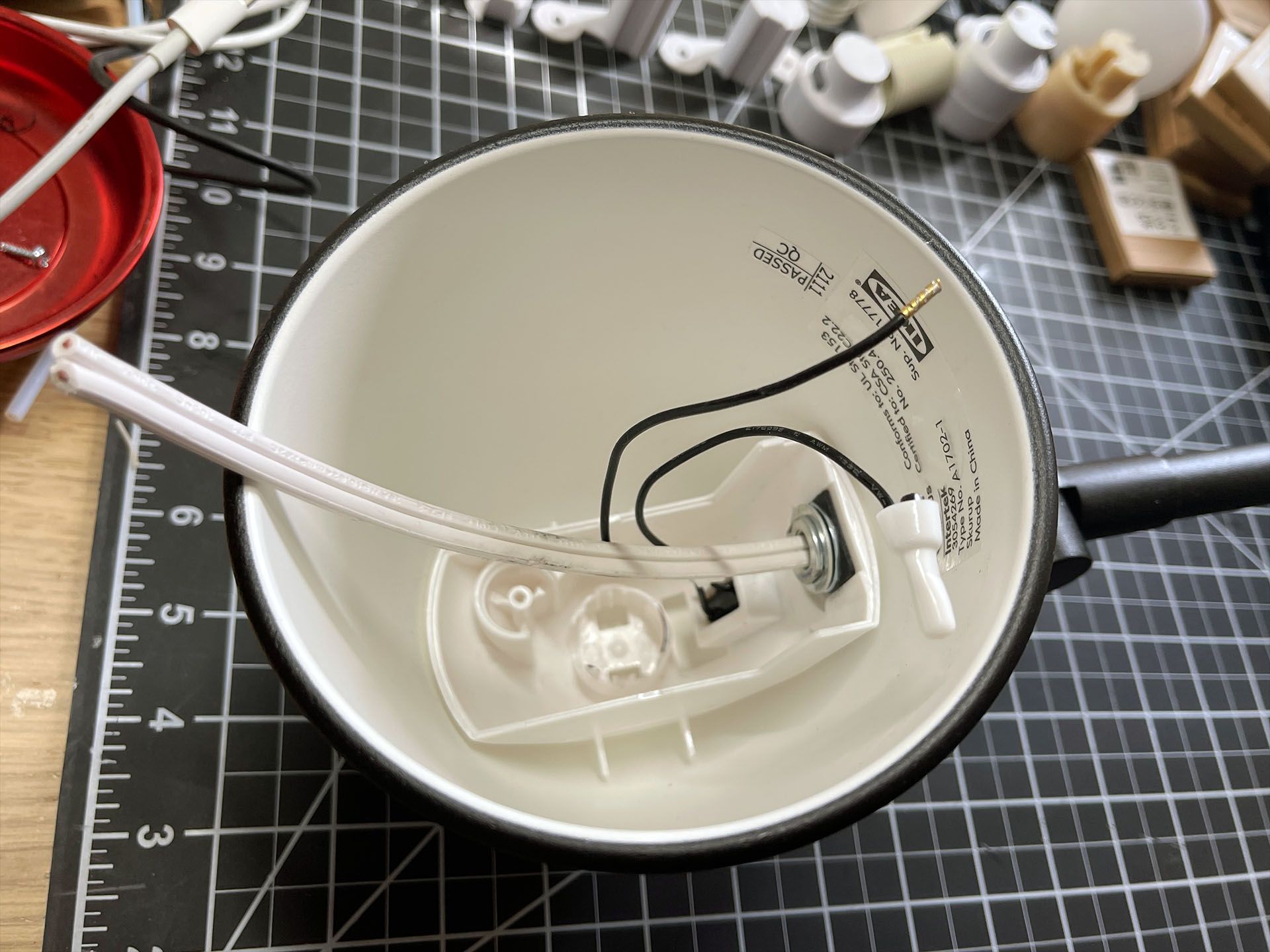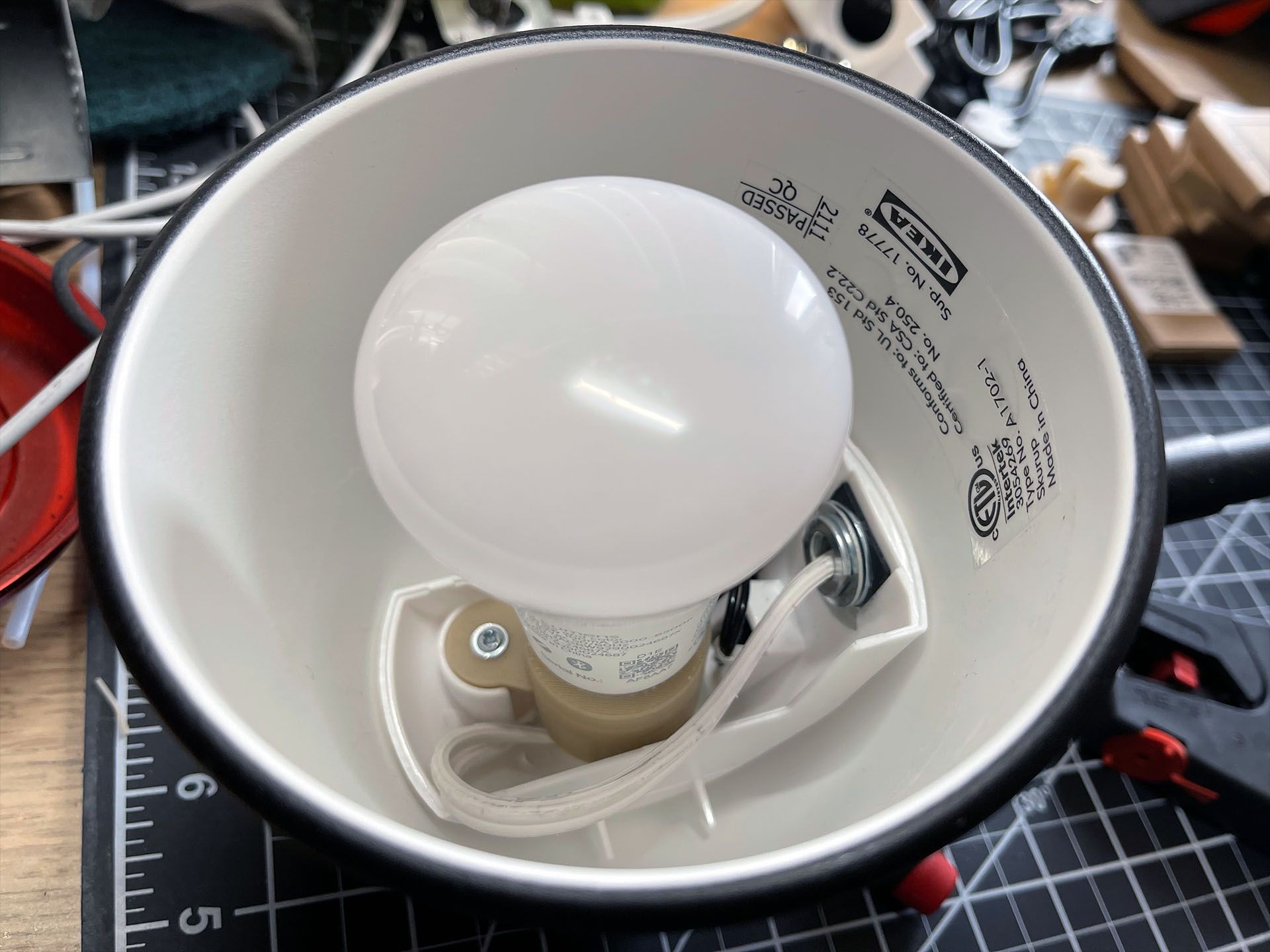This project involved mains wiring. I don't recommend trying anything mentioned in this write up unless you are sure you know what you are doing. Mains voltages can KILL and severely INJURY you.
Finding the right lamp for your workspace is not always an easy task. Searching through the Ikea catalog offered up some options, but none were quite right. The Skurup Wall Lamp was a close fit, but only accepts E12 bulbs. I have a full Philips Hue setup for all the lights around my place and as such had a couple extra E26 bulbs that I wanted to use. The Skurup seems like it could be adapted to the E26 bulb, but the standard E12 to E26 adapters on the market made the bulb stick out way too far from the lamp shade.

The first step of any adapter project is to see what you have to work with. Inside the metal lamp is a plastic housing containing the switch and bulb socket. I had two lamps to work with so I wasn't too concerned about breaking anything.

Removing the threaded nut on the bulb socket allows the covering plate to be removed. Line and neutral come in from the base of the lamp, with the line side going to the tiny switch at the back. A loop molded into the plastic housing provides strain relief for the AC wiring.

The bulb socket is removed by prying out the two clips, one on each side of the socket.

The socket uses a push-in type connector for the wiring. A crimped wire nut under the heat shrink completes the circuit from the switch back to neutral.

Removing a plastic washer and screw allows the cable to be freed up. I clipped off the switch as I would not be using it. The new bulb socket will be directly wired to the cabling.

After some sizing and fit checks, I decided to remove the two socket clips. A pair of side cutters made short work of the thin plastic. As an experiment I swapped out the wiring on one lamp and I wouldn't recommend trying to thread wiring through the tubes of the lamp.

It took a few iterations to work out the optimal sizing and hole positioning. The new socket adapter would take advantage of the strain relief plate mounting point. Having this fastener connection really improved how robust this adapter would be. The E26 bulb socket came out of a set of Aplstar Black Retro Edison Lamp Holders. They are pretty basic., but work just fine.

The initial fit checks and prototypes were printed in PLA, but the final product was printed in ABS for better heat deflection.

The final iteration was a two piece design that provide access to the screw terminals on the E26 bulb socket.

Once the bulb socket was in place, some CA glue pressed into the top cap keeps everything secure.

The completed adapter press fits into the existing recess and the screw provides an secure attachment point. The wiring is passed through the original strain relief loop, but it's a tighter fit.

A Philips Hue E26 bulb screws in perfectly. The original lamp was only rated for 8.9 Watts and the Hue bulb pulls 10W, but it shouldn't be a problem. It seemed like the switch was the limiting factor.

It's a pretty close fit with just a few millimeters of bulb sticking past the rim.

Two modified and installed Skurup Wall Lamps with Philip Hues Color bulbs above my new desk space. This was a pretty quick weekend project, but ended with excellent results. I may post the adapter models at a later date if long term use doesn't reveal any problems.